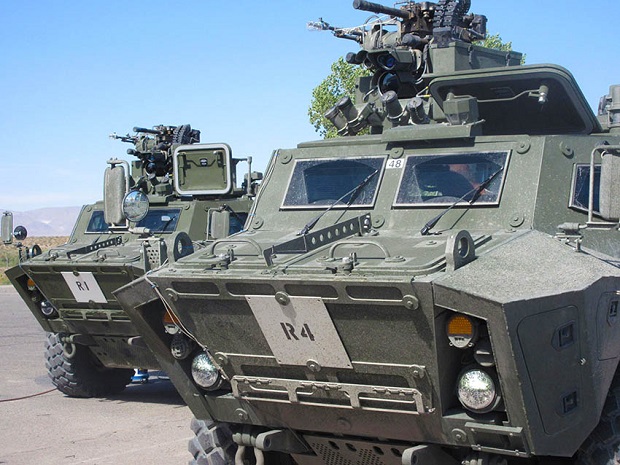By Lt. Col. Kyle D. Keffer and Stephen Fouchard
Procuring vital equipment for the Canadian Armed Forces can be a long and winding road with many stops and sometimes detours – but it is one with a necessary and satisfying destination.
The end result ensures that our Canadian soldiers are well-equipped and protected to continue to effectively serve Canadians in Canada and around the world, while also making sure taxpayers get the best value for their money.
Project approval process
There are many control measures in place and approvals that need to be attained in order to buy those tanks and guns and communications kits. In general, a major acquisition takes anywhere from eight to 10 years from start to finish, with delivery beginning anywhere from year six to year eight. A project can take longer due to many internal and external factors, such as industry availability, obsolescence, or political and economic pressures; but it can also go much faster with significantly higher risk, which is not necessarily a good thing.
The project approval process is divided into five phases:
- Identification: This generally takes about two years and is focused on the identification of what needs to be fixed or replaced. The result is an approved set of requirements and the Strategic Context Document (SCD). The SCD contains multiple options, such as buying new or life-extending maintenance for current equipment. The process of securing funding starts here. This is where industry and stakeholder engagement for the project team starts and is critical from here on out to ensuring success. As the team develops, the project stakeholder and industry engagement becomes more refined.
- Options Analysis:OA can take anywhere from two to three years and is focused on analyzing the approved options as set out in ID. During this phase, the project team conducts a cost-benefit analysis that is presented in a Business Case Analysis (BCA) document. The BCA identifies a preferred option that is the top pick. If successful, the project team is granted Project Approval–Definition and the project moves into the next phase.
- Definition:Definition generally takes two years. In this phase, the project is granted access to funds within the Department’s or Government’s budget. This allows the project team to continue the work of refining the preferred option, further defining the requirements, translating these requirements into technical specifications and continuing direct engagement with stakeholders to release a Request for Proposal to industry. From there, interested businesses submit bids to be evaluated. Generally, this phase ends with a bid evaluation being completed and a bid winner being identified. The project team then presents substantive costs and plans to deliver the equipment that has been identified as the right solution.
- Implementation:Implementation generally takes two to three years. In this phase, the contract is awarded and the focus is on coordinating all efforts and funding towards the delivery of the equipment. The complexities of a project are truly experienced here. The project team focuses on coordinating their efforts with industry, the Government, the Department of National Defence, and the Divisions and Formations set to receive the new equipment. The equipment is fielded based on the original plan. Additionally, the project team must take into account any relevant global or domestic factors that may have emerged as the project developed.
- Close-Out:Close-out takes no more than a year and is the phase where the project team confirms delivery is complete, no further funding is required and that the project is complete. The project team is required to present a closure report to the authority that originally approved the acquisition.
This is just a very general overview of the very detailed processes for the acquisition of military equipment in Canada.
Each phase has intricacies and complexities that must be managed to ensure success prior to being given authority to advance to the next phase of the project.
The many departmental organizations that are involved throughout the process are very focused to ensure delivery of the needed equipment is purposeful, timely and affordable.
Lieutenant-Colonel Kyle D. Keffer is Deputy Director Land Requirements and Stephen Fouchard, is from the Army Public Affairs

